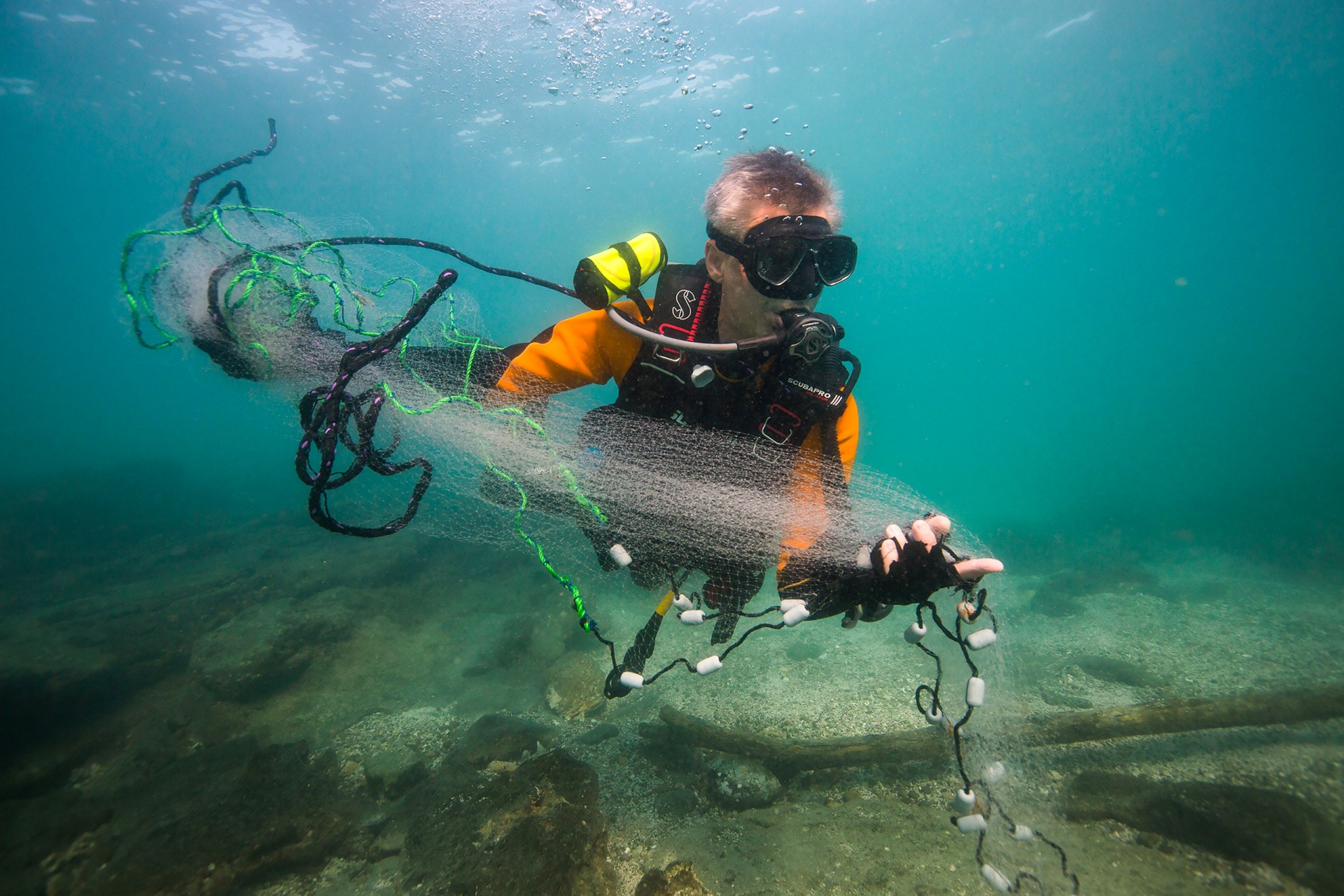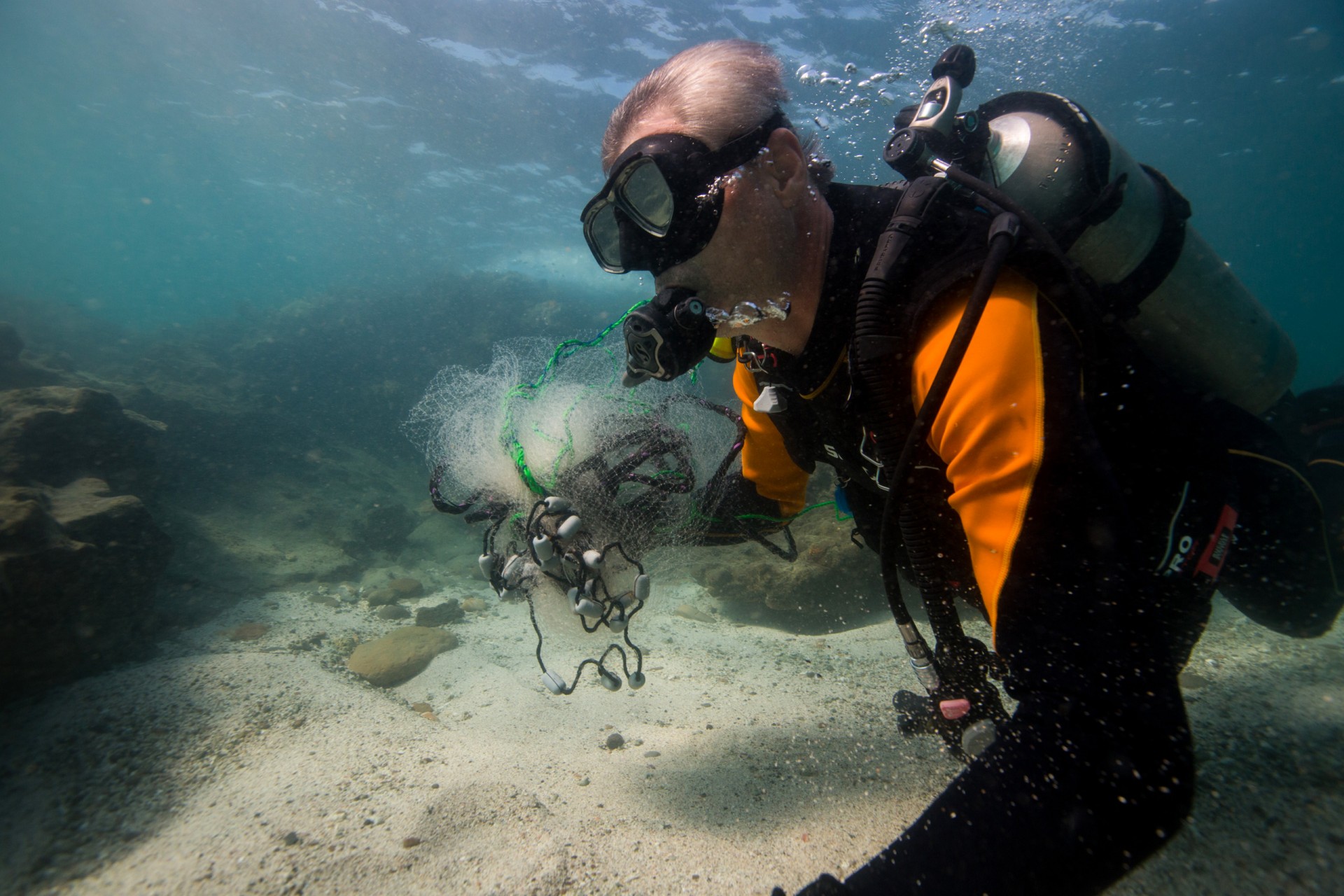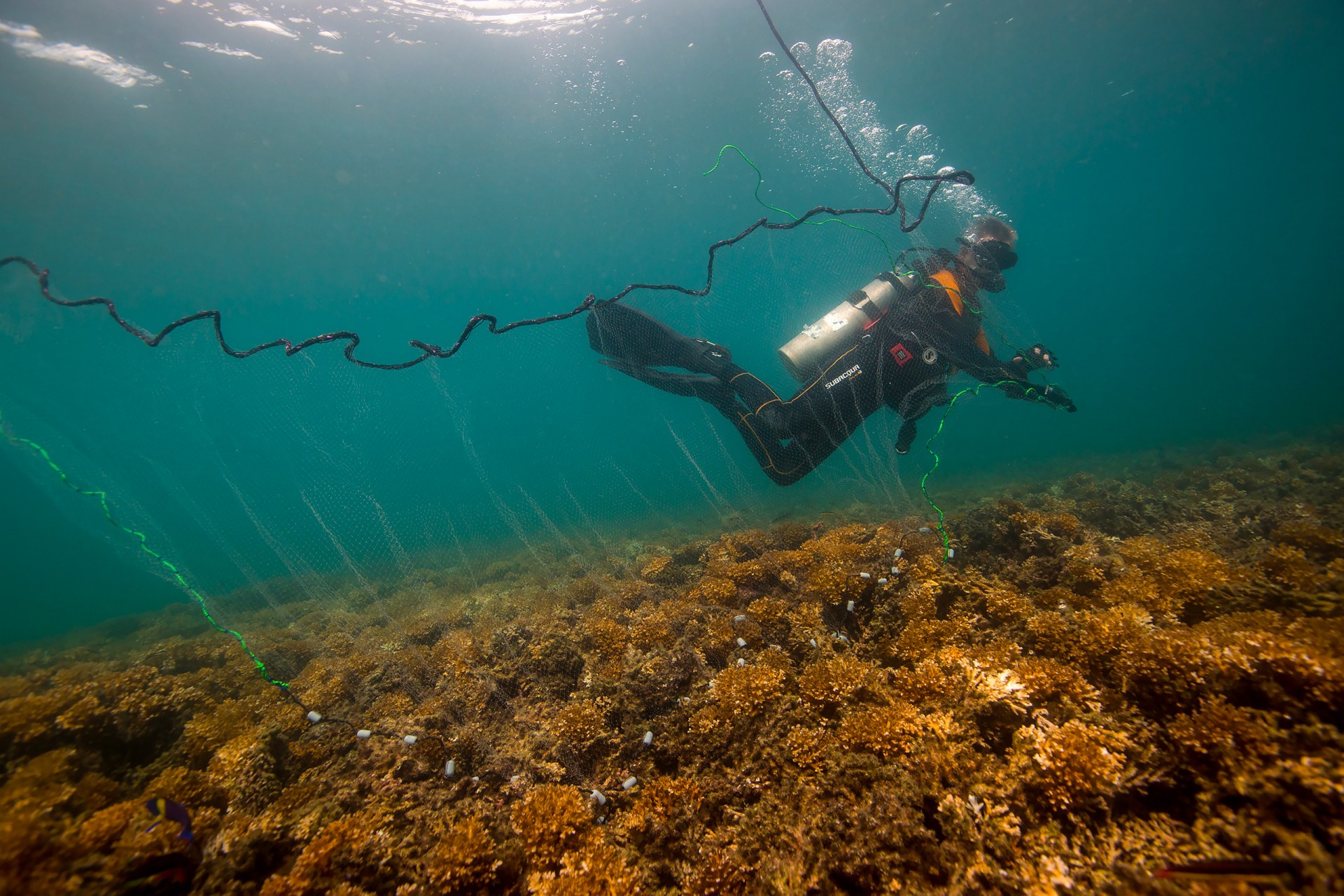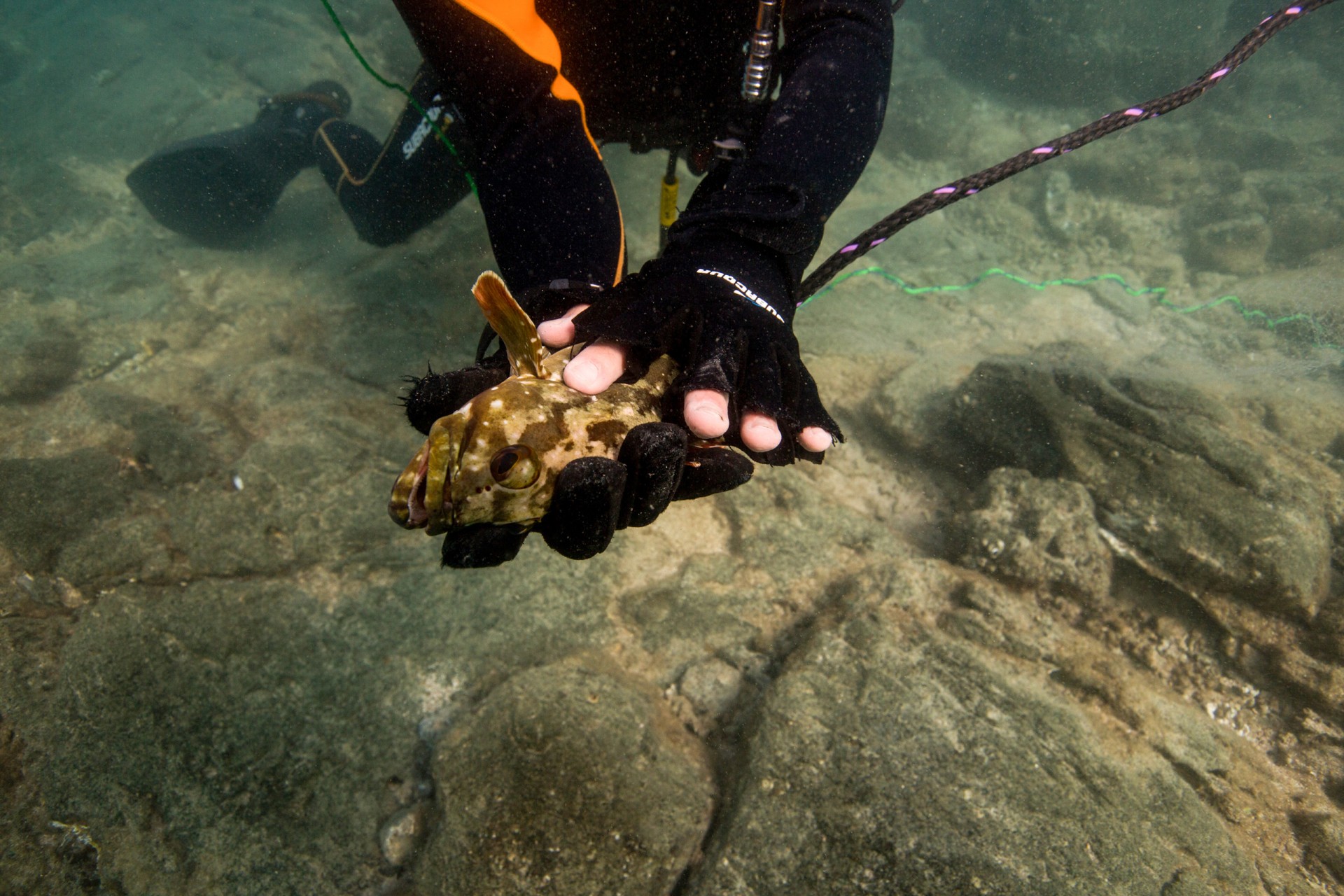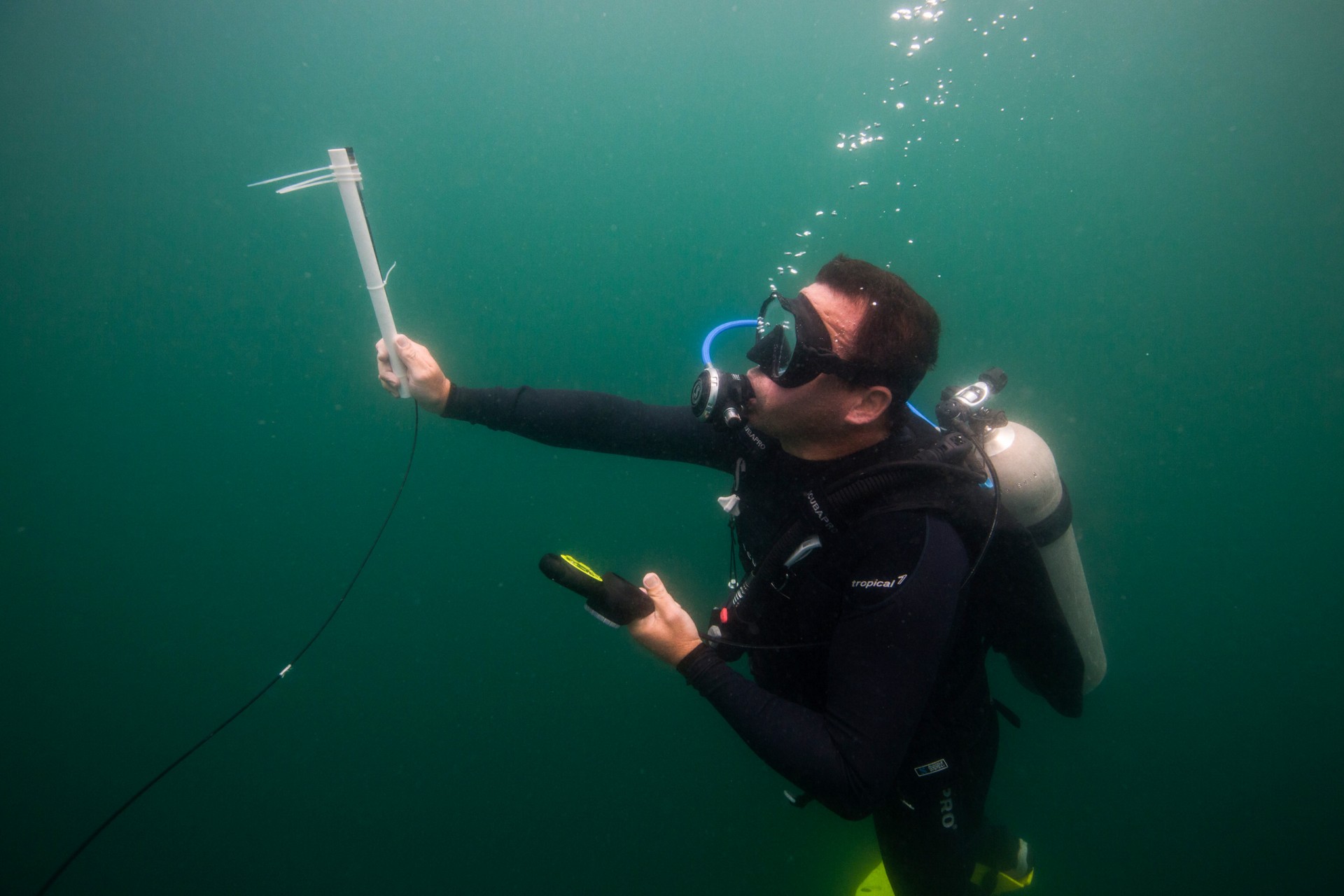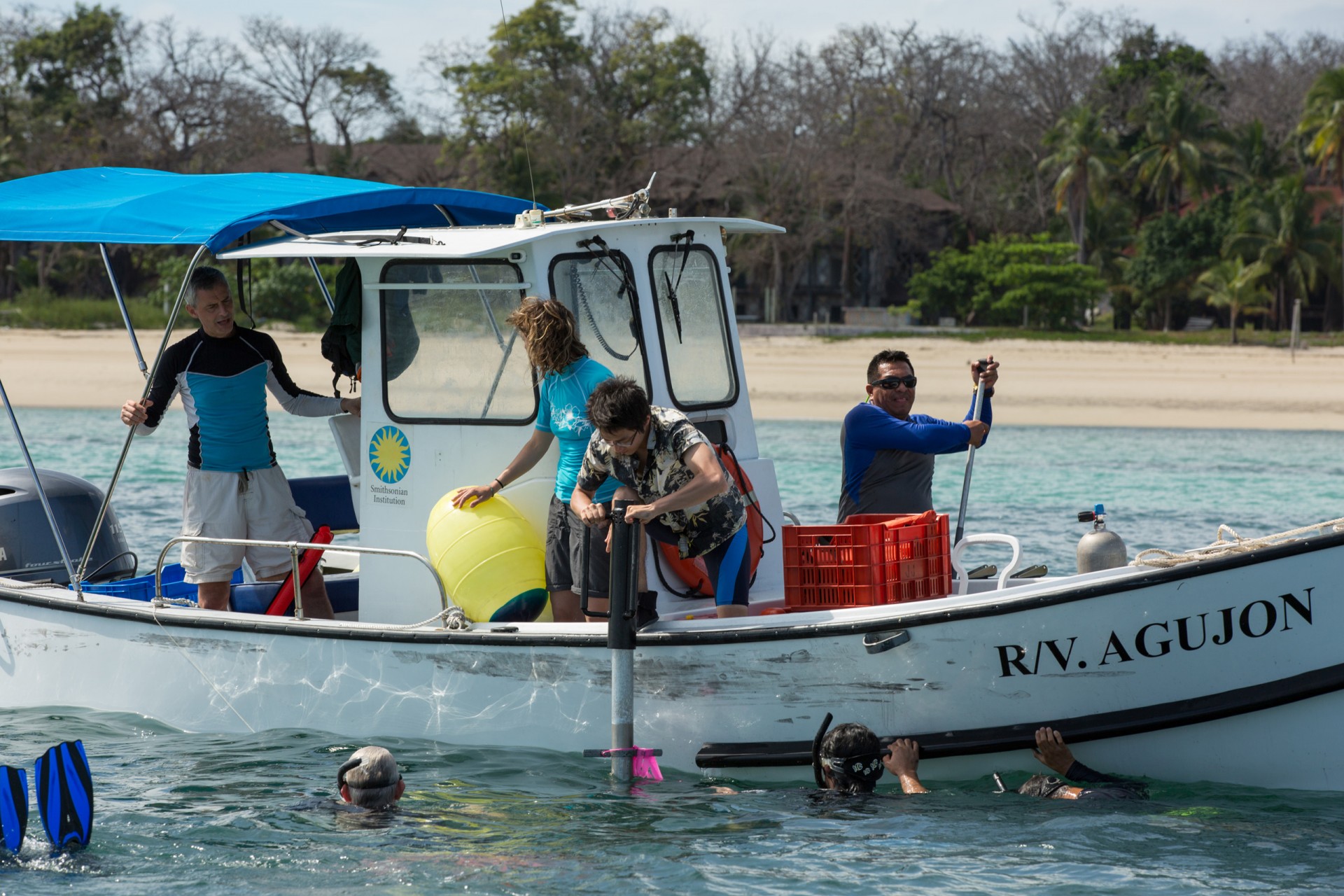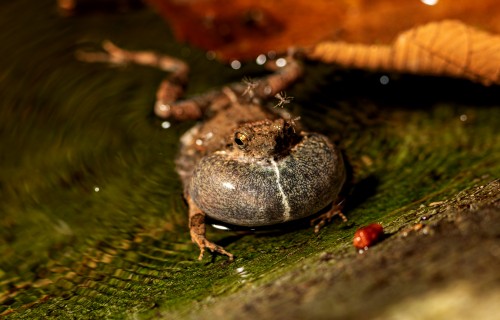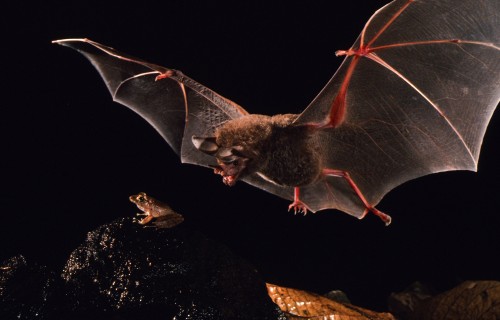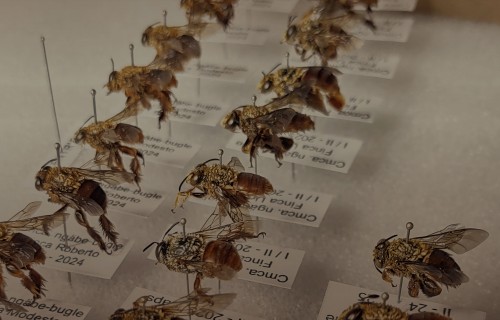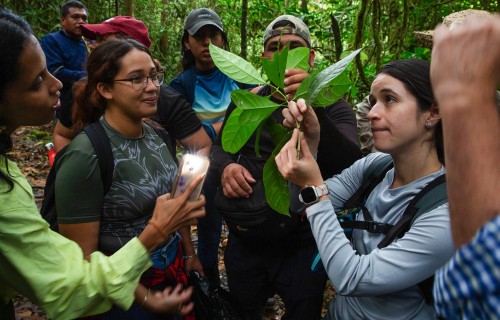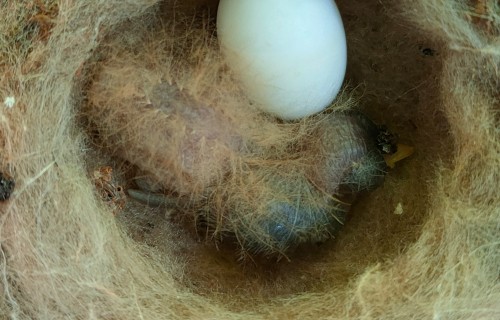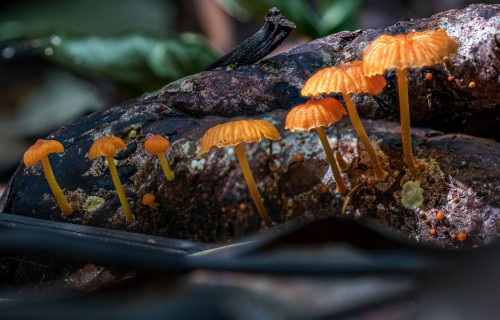How katydid songs expand
researchers’ knowledge of
tropical insects
Through
the eyes
of a fish
A tale of communication
on coral reefs
Las Perlas Archipelago, Panama
Coral reef fish often see a very different seascape that humans do. Using the evolutionary laboratory created by the Isthmus of Panama, Michele Pierotti is learning exactly how they view their underwater world.
Bright orange corals, purple sponges and green algae create homes for one of the greatest concentrations of biodiversity in the world: the coral reefs. Of their denizens, tropical reef fishes are perhaps the most multi-hued of all. Cleaner fish sport a two-tone combination of blue and yellow. Hamlets vary from dark shades of blue to bright mixes of yellow, white and iridescent green. Some fish are deep red, others black with fluorescent blue dots, still more sport flashy combinations of silver, yellow and turquoise.
But that is just the canvas we humans can see. Many fish perceive an entirely different seascape where ultraviolet light is just as important — or in some cases, even more — than our standard channels of red, green and blue. Sea water alters the scene as well. Murky green or crystal blue environments conspire against all water-immersed organisms’ perception of color, as does depth. At about 10 meters below the surface, most ultraviolet light has been absorbed. At another extreme, some fish are color blind, rendering their own fancy colors (but perhaps not their patterns) rather inconspicuous to their eyes. So why bother to evolve an attractive pattern of yellow and green if all you can see is a greyish smudge? Perhaps that pattern is not meant for members of their own species.
These are just a few of challenges confronting Michele Pierotti, a Smithsonian fellow, who is learning to see tropical marine environments through the eyes of fishes.
“When we dive over a coral reef, we find ourselves in the midst of a busy underwater metropolis crisscrossed by a myriad of visual signals, colors and behaviors,” says Pierotti. “These signals are meant not for our eyes but for one or many other underwater creatures. Those eyes might be looking for the familiar colors of a partner, the mimetic silhouette of a lurking predator, the unmistakable hues of a cleaner fish at its station, or the warning coloration of an aposematic nudibranch.”
Pierotti has spent much of the last two years diving and collecting fishes from either side of the Isthmus of Panama. A globally unique natural evolutionary experiment, the rise of the isthmus split a single, homogenous ocean into Atlantic and Pacific some three million years ago. Many of the fish species found on either side today are direct descendants of single species that were divided by this Central American barrier. While local conditions may vary, the Eastern Tropical Pacific is generally greenish and nutrient-rich, while the Caribbean is clear blue. Because environmental conditions influence the evolution of vision, these recently separated sister species are ideal candidates for research.
By studying the eyes of closely related species of wrasses, scorpionfishes, grunts, groupers and damselfish — among many others — Pierotti is discovering how environmental factors cause local adaptations in vision. Even if they have long been separated by the isthmus, genetically these fish still share most of their genome. And because the genes that control for vision are well known, Pierotti can see exactly how the sequences of these genes are modified in response to selection for optimal vision in the Caribbean or in the East Pacific. This work will lead to deeper understanding of the genetic drivers of vision, in general.
Lessons for humans, environment
One reason scientists study fish vision is that many fish species’ vision is similar to humans.’ Basic genetic understanding of human vision is relatively new to science, and insights garnered from fish have the potential to address vision disorders, including the genetic roots of disease, in humans.
Understanding fish vision is important to learning how fish adapt to pollution in the water, most importantly, to reduced visibility. Pierotti points to two well-known cases that hold important lessons about how drastic humans can influence fish biodiversity, behavior and survival. In Africa’s Lake Victoria, where Pierotti did his Ph.D. work, a once super-diverse group of cichlids essentially underwent reverse-speciation, when their visually driven species recognition cues were disrupted by pollution. They subsequently crossbred themselves into hybrid swarms.
At the Achotines laboratory in Panama, where tuna are bred for research, perfectly healthy tuna larvae in some tanks mysteriously would not feed and eventually starved to death. Scientists discovered that the tanks where this happened did not receive enough full-spectrum light, and in particular the ultraviolet light that they need to see their otherwise transparent planktonic prey. Simply depriving larvae of some of the natural light spectrum, which could happen in polluted waters absorbing the sun’s UV component, could prompt population extinctions.
“For example, when underwater light is altered, color patterns change appearance and prey that were successfully escaping visual predators might now find their camouflage ineffective,” Pierotti says. “Coral reefs that are bleaching provide a very ineffective background for countless species across the globe that evolved camouflage against the corals' natural colors.”
“The take-home message is that the integrity of our oceans, and how we manage the quality of their waters directly affects underwater life. And that, in turn, cascades quickly to entire ecological communities and, of course, our fisheries.

